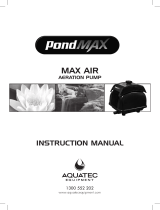
English (GB)
10
5.2.2 Type key for pulsation dampers D, DB, DBG
The type key is designed for the precise identification of the
product and not for configuration purposes. It can be found on the
product packaging.
Example: PULS.DAMPER-DBG0,30L PV/T G3/4-B4/B3
* For design DB and DBG: The material applies also to the
separating diaphragm.
5.2.3 Type key for pulsation dampers SD, CSD
The type key is designed for the precise identification of the
product and not for configuration purposes. It can be found on the
product packaging.
Example: PULS.DAMPER-CSD0,5L PVC/V,E G1/2-B3/F
Product type
PULS.DAMPER-DBG0,30L PV/T G3/4-B4/B3
Pulsation damper
Design
PULS.DAMPER-DBG0,30L PV/T G3/4-B4/B3
D For discharge side, without separating diaphragm
DB For discharge side, with separating diaphragm
DBG
For discharge side, with separating diaphragm and
pressure gauge
DBG-H
For discharge side, with separating diaphragm and
pressure gauge for high pressure applications
Damper volume in litres
PULS.DAMPER-DBG0,30L PV/T G3/4-B4/B3
Body material
PULS.DAMPER-DBG0,30L PV/T G3/4-B4/B3
PP Body and connector material: polypropylene
PVC Body and connector material: polyvinyl chloride
PV
Body and connector material: polyvinylidene fluoride
(PVDF)
SS Body material: stainless steel
Gasket material*
PULS.DAMPER-DBG0,30L PV/T G3/4-B4/B3
EEPDM
VFKM
T PTFE
- No gaskets included
Threaded connection
PULS.DAMPER-DBG0,30L PV/T G3/4-B4/B3
G1/4 Internal thread Rp 1/4
G3/8 Internal thread Rp 3/8
G1/2 Internal thread Rp 1/2
G3/4 Internal thread Rp 3/4
G1 Internal thread Rp 1
G1 1/2 Internal thread Rp 1 1/2
G2 Internal thread Rp 2
Dosing line connector
PULS.DAMPER-DBG0,30L PV/T G3/4-B4/B3
WO Without dosing line connector
B3/F External diameter 16 mm, internal diameter 12 mm
B4/B3 External diameter 25 mm, internal diameter 20 mm
B0/H External diameter 25 mm, internal diameter 20 mm
B4/H External diameter 25 mm, internal diameter 20 mm
K/B0
External diameter 40 mm, internal diameter 25 and
32 mm
B5/B4
External diameter 40 mm, internal diameter 25 and
32 mm
Product type
PULS.DAMPER-CSD0,5L PVC/V,E G1/2-B3/F
Pulsation damper
Design
PULS.DAMPER-CSD0,5L PVC/V,E G1/2-B3/F
SD For suction side, without calibration function
CSD For suction side, with calibration function
Damper volume in litres
PULS.DAMPER-CSD0,5L PVC/V,E G1/2-B3/F
Body material
PULS.DAMPER-CSD0,5L PVC/V,E G1/2-B3/F
PVC Body and connector material: polyvinyl chloride
SS Body material: stainless steel
Gasket material
PULS.DAMPER-CSD0,5L PVC/V,E G1/2-B3/F
V,E FKM and EPDM gaskets are included
- No gaskets included
Threaded connection
PULS.DAMPER-CSD0,5L PVC/V,E G1/2-B3/F
G1/4 Internal thread Rp 1/4
G1/2 Internal thread Rp 1/2
G3/4 Internal thread Rp 3/4
G1 Internal thread Rp 1
- No threaded connection
Dosing line connector
PULS.DAMPER-CSD0,5L PVC/V,E G1/2-B3/F
WO Without dosing line connector
B3/F External diameter 16 mm, internal diameter 12 mm
B0/H External diameter 25 mm, internal diameter 20 mm
B4/H External diameter 25 mm, internal diameter 20 mm
Y/K Internal diameters 40, 50 and 63 mm
50/K Internal diameters 40 and 50 mm
C9/
External ASTM / BS pipe 1/2", internal ASTM / BS
pipe 3/8"
C8/C7
External ASTM / BS pipe 1", internal ASTM / BS pipe
3/4"
-/C8 Internal ASTM / BS pipe 1"





















